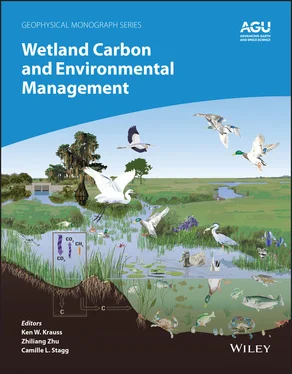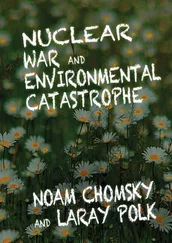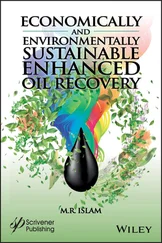180 Hines, J., Reyes, M., Mozder, T. J., & Gessner, M. O. (2014). Genotypic trait variation modifies effects of climate warming and nitrogen deposition on litter mass loss and microbial respiration. Global Change Biology, 20(12), 3780–3789. https://doi.org/10.1111/gcb.12704
181 Hines, M. E., Duddleston, K. N., & Kiene, R. P. (2001). Carbon flow to acetate and C1 compounds in northern wetlands. Geophysical Research Letters, 28(22), 4251–4254. https://doi.org/10.1029/2001GL012901
182 Hobbie, S. E. (2000). Interactions between litter lignin and soil nitrogen availability during leaf litter decomposition in a Hawaiian montane forest. Ecosystems, 3(5), 484–494. https://doi.org/10.1007/s100210000042
183 Hockaday, W. C., Masiello, C. A., Randerson, J. T., Smernik, R. J., Baldock, J. A., Chadwick, O. A., & Harden, J. W. (2009). Measurement of soil carbon oxidation state and oxidative ratio by 13C nuclear magnetic resonance. Journal of Geophysical Research: Biogeosciences, 114(2), 1–14. https://doi.org/10.1029/2008JG000803
184 Hodgkins, S. B., Tfaily, M. M., McCalley, C. K., Logan, T. A., Crill, P. M., Saleska, S. R., et al. (2014). Changes in peat chemistry associated with permafrost thaw increase greenhouse gas production. Proceedings of the National Academy of Sciences of the United States of America, 111(16), 5819–5824. https://doi.org/10.1073/pnas.1314641111
185 Hodgkins, S. B., Richardson, C. J., Dommain, R., Wang, H., Glaser, P. H., Verbeke, B., et al. (2018). Tropical peatland carbon storage linked to global latitudinal trends in peat recalcitrance. Nature Communications, 9, 3640. https://doi.org/10.1038/s41467‐018‐06050‐2
186 Holden, J. (2005). Peatland hydrology and carbon release: Why small‐scale process matters. Philosophical Transactions of the Royal Society A: Mathematical, Physical and Engineering Sciences, 363(1837), 2891–2913. https://doi.org/10.1098/rsta.2005.1671
187 Holgerson, M. A., Post, D. M., & Skelly, D. K. (2016). Reconciling the role of terrestrial leaves in pond food webs: A whole‐ecosystem experiment. Ecology, 97(7), 1771–1782. https://doi.org/10.1890/15‐1848.1
188 Holm, G. O., Perez, B. C., McWhorter, D. E., Krauss, K. W., Johnson, D. J., Raynie, R. C., & Killebrew, C. J. (2016). Ecosystem level methane fluxes from tidal freshwater and brackish marshes of the Mississippi River Delta: Implications for coastal wetland carbon projects. Wetlands, 36(3), 401–413. https://doi.org/10.1007/s13157‐016‐0746‐7
189 Holmquist, J. R., Windham‐Myers, L., Bernal, B., Byrd, K. B., Crooks, S., Gonneea, M. E., et al. (2018). Uncertainty in United States coastal wetland greenhouse gas inventorying. Environmental Research Letters, 13(11), 115005. https://doi.org/10.1088/1748‐9326/aae157
190 Hooijer, A., Page, S., Jauhiainen, J., Lee, W. A., Lu, X. X., Idris, A., & Anshari, G. (2012). Subsidence and carbon loss in drained tropical peatlands. Biogeosciences, 9(3), 1053–1071. https://doi.org/10.5194/bg‐9‐1053‐2012
191 Hope, G., Chokkalingam, U., & Anwar, S. (2005). The stratigraphy and fire history of the Kutai Peatlands, Kalimantan, Indonesia. Quaternary Research, 64(3), 407–417. https://doi.org/10.1016/j.yqres.2005.08.009
192 Hopkinson, C. S. (1992). A comparison of ecosystem dynamics in freshwater wetlands. Estuaries, 15(4), 549–562. https://doi.org/10.2307/1352397
193 Hopkinson, C. S., Morris, J. T., Fagherazzi, S., Wollheim, W. M., & Raymond, P. A. (2018). Lateral marsh edge erosion as a source of sediments for vertical marsh accretion. Journal of Geophysical Research: Biogeosciences, 123(8), 2444–2465. https://doi.org/10.1029/2017JG004358
194 Hopple, A. M., Wilson, R. M., Kolton, M., Zalman, C. A., Chanton, J. P., Kostka, J. E., et al. (2020). Massive peatland carbon banks vulnerable to rising temperatures. Nature Communications, 11(1), 4–10. https://doi.org/10.1038/s41467‐020‐16311‐8
195 Hu, B., Shen, L., Lian, X., Zhu, Q., Liu, S., Huang, Q., et al. (2014). Evidence for nitrite‐dependent anaerobic methane oxidation as a previously overlooked microbial methane sink in wetlands. Proceedings of the National Academy of Sciences of the United States of America, 111(12), 4495–4500. https://doi.org/10.1073/pnas.1318393111
196 Hupp, C. R. (2000). Hydrology, geomorphology and vegetation of Coastal Plain rivers in the south‐eastern USA. Hydrological Processes, 14, 2991–3010. https://doi.org/10.1002/1099‐1085(200011/12)14:16/17<2991::AID‐HYP131>3.0.CO;2‐H
197 Hupp, C. R., Kroes, D. E., Noe, G. B., Schenk, E. R., & Day, R. H. (2019). Sediment trapping and carbon sequestration in floodplains of the Lower Atchafalaya Basin, LA: allochthonous versus autochthonous carbon sources. Journal of Geophysical Research: Biogeosciences, 124(3), 663–677. https://doi.org/10.1029/2018JG004533
198 Hutchens, J. J., Batzer, D. P., & Reese, E. (2004). Bioassessment of silvicultural impacts in streams and wetlands of the eastern United States. Water, Air, and Soil Pollution: Focus, 4(1), 37–53. https://doi.org/10.1023/B:WAFO.0000012827.95431.b8
199 Hutchinson, J. N. (1980). The record of peat wastage in the East Anglian fenlands at Holme Post, 1848–1978 A.D. The Journal of Ecology, 68(1), 229. https://doi.org/10.2307/2259253
200 Ipsilantis, I., & Sylvia, D. M. (2007). Abundance of fungi and bacteria in a nutrient‐impacted Florida wetland. Applied Soil Ecology, 35(2), 272–280. https://doi.org/10.1016/j.apsoil.2006.09.002
201 Jackson, C. R., & Vallaire, S. C. (2009). Effects of salinity and nutrients on microbial assemblages in Louisiana wetland sediments. Wetlands, 29(1), 277–287. https://doi.org/10.1672/08‐86.1
202 Jacob, D. L., Yellick, A. H., Kissoon, L. T. T., Asgary, A., Wijeyaratne, D. N., Saini‐Eidukat, B., & Otte, M. L. (2013). Cadmium and associated metals in soils and sediments of wetlands across the Northern Plains, USA. Environmental Pollution, 178, 211–219. https://doi.org/10.1016/j.envpol.2013.03.005
203 Jager, D. F., Wilmking, M., & Kukkonen, J. V. K. (2009). The influence of summer seasonal extremes on dissolved organic carbon export from a boreal peatland catchment: Evidence from one dry and one wet growing season. Science of the Total Environment, 407(4), 1373–1382. https://doi.org/10.1016/j.scitotenv.2008.10.005
204 Jassey, V. E. J., Reczuga, M. K., Zielińska, M., Słowińska, S., Robroek, B. J. M., Mariotte, P., et al. (2018). Tipping point in plant–fungal interactions under severe drought causes abrupt rise in peatland ecosystem respiration. Global Change Biology, 24(3), 972–986. https://doi.org/10.1111/gcb.13928
205 Jastrow, J. D., Amonette, J. E., & Bailey, V. L. (2007). Mechanisms controlling soil carbon turnover and their potential application for enhancing carbon sequestration. Climatic Change, 80(1–2), 5–23. https://doi.org/10.1007/s10584‐006‐9178‐3
206 Jiao, N., Herndl, G. J., Hansell, D. A., Benner, R., Kattner, G., Wilhelm, S. W., et al. (2010). Microbial production of recalcitrant dissolved organic matter: Long‐term carbon storage in the global ocean. Nature Reviews Microbiology, 8(8), 593–599. https://doi.org/10.1038/nrmicro2386
207 Joabsson, A., Christensen, T. R., & Wallén, B. (1999). Vascular plant controls on methane emissions from northern peatforming wetlands. Trends in Ecology and Evolution, 14(10), 385–388. https://doi.org/10.1016/S0169‐5347(99)01649‐3
208 Johnson, W. C., Millett, B. V, Gilmanov, T., Voldseth, R. A., Guntenspergen, G. R., & Naugle, D. E. (2005). Vulnerability of northern prairie wetlands to climate change. BioScience, 55(10), 863. https://doi.org/10.1641/0006‐3568(2005)055[0863:vonpwt]2.0.co;2
209 Joosten, H. (2010). The Global Peatland CO2 Picture. Ede, Netherlands. https://doi.org/10.1016/j.quascirev.2011.01.018
210 Joye, S. B., & Hollibaugh, J. T. (1995). Influence of sulfide inhibition of nitrification on nitrogen regeneration in sediments. Science, 270(5236), 623–625.
Читать дальше












